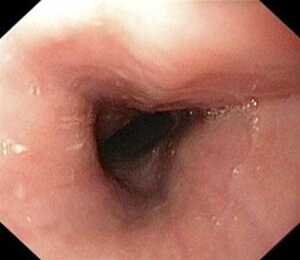How Much Does an Endoscopy Cost Without Insurance?
Endoscopy is a medical procedure used to investigate and visually screen all kinds of conditions of the upper gastrointestinal tract. An endoscopy procedure usually costs between $1,300 and $5,000 without insurance. These costs should be enough to cover the fees of the anesthesiologist, the physician who will perform the endoscopy, and the facility in which it is done.
Endoscopies, just like other medical procedures, become a lot more costly if you don’t have insurance. You can avoid most of the costs related to medical procedures if you lead a healthy life and avoid going to the doctor a lot.
How Much Does an Endoscopy Cost Without Insurance?
The cost of an endoscopy is anywhere between $1,300 and $5,000 without insurance in the United States. The endoscopy procedure has a national average price of $2,750.
These costs will usually depend on where you’re getting the procedure. Below, you will find the average price ranges at different facilities in different cities in the United States.
The Cost of an Endoscopy By Facility
You can have an endoscopy in either an outpatient facility or an inpatient one. In the case of endoscopy procedures done at outpatient facilities, like surgical centers or clinics, the final cost will usually be lower. Hospitals or other inpatient facilities will have to cover the cost of hospital rooms, supplies, and overall maintenance of the facility, making them a little more expensive. Endoscopy procedures done at outpatient facilities, such as clinics and other surgical centers are oftentimes less expensive.
- Inpatient Facility Average: $4,400
- Outpatient Facility Average: $2,750
The Cost of an Endoscopy by City
| LOCATION | COST |
|---|---|
| San Antonio, TX | $1,100.00 – $3,630.00 |
| Tampa, FL | $1,155.00 – $3,850.00 |
| Pittsburgh, PA | $1,265.00 – $4,070.00 |
| Tucson, AZ | $1,155.00 – $3,850.00 |
| Baltimore, MD | $1,265.00 – $4,070.00 |
| San Diego, CA | $1,650.00 – $5,390.00 |
| Fort Worth, TX | $1,100.00 – $3,630.00 |
| Buffalo, NY | $1,320.00 – $4,290.00 |
| Augusta, GA | $1,072.50 – $3,520.00 |
| Springfield, IL | $1,210.00 – $3,850.00 |
Factors that Influence the Cost of an Endoscopy
The cost of the endoscopy procedure will likely vary based on factors like the type of treatments and sedatives used during the procedure, your location, whether you are insured or not, and the facility you’re going to.
You might also like our articles about the cost of a cytoscopy, video capsule endoscopy, or colonoscopy.
Here’s how each of the factors influences the price of an endoscopy.
Location
As you can see in the table above, the cost of an endoscopy is influenced by the location in which you choose to have the procedure. While in Atlanta you will be charged roughly $3,300, in San Diego the prices are a lot higher and it isn’t unusual for people to pay closer to $5,000.
Facility
The place you go to to have this procedure will also influence the final price you will have to pay. You will likely save money if you choose to have your endoscopy done at an outpatient facility, as inpatient facilities charge more for endoscopies due to their higher costs of maintenance.
Insurance Status
When ordered by a doctor, the endoscope procedure will usually be covered by health insurance. Even so, you are still required to meet your deductible and pay for coinsurance or copay. If you are insured, then it will be more expensive to go to an out-of-network provider than get the endoscopy at an in-network one.
You will have to pay several thousand dollars out-of-pocket for a procedure like this without health insurance. To make sure you get the best price, it would be a good idea to look around and call multiple facilities in advance. In this way, you can find doctors who offer special rates for people who don’t have insurance.
How can you save money on an endoscopy procedure?
Even with the wide range for the endoscopy cost, you can still follow some steps to make sure you get the lowest price:
- Ask the provider straight up if people without insurance get any special rates when paying in full.
- Go for an in-network provider if you have insurance.
- Don’t limit yourself to facilities in your area. Call facilities outside of your area as well, as you might be able to save money if you travel a bit farther, depending on your location.
- When receiving a prescription, go for the generic versions of medications, as this is usually the cheaper route.
- Whenever possible, choose an outpatient facility over a hospital.
Endoscopy Frequently Asked Questions (FAQs)
What is an endoscopy?
Endoscopy is a medical procedure that uses a long and flexible tube with a camera at its end to visually examine the upper digestive system. The specialist in the digestive system is called a gastroenterologist. They use endoscopy to diagnose and treat different types of conditions that affect the beginning of the small intestine, the stomach, or the esophagus.
How to prepare for an endoscopy?
According to specialists, you will have to fast for four to eight hours before the procedure is done so that your stomach is empty. You should also stop from taking blood thinners and other types of medications before the procedure, to decrease the risk of bleeding. Be sure to get specific recommendations from your doctor to ensure procedure safety if you suffer from any other chronic conditions that need specific medications.
Patients in the US are usually treated for both lower and upper endoscopy. Monitored anesthesia care or deep sedation, and concious sedation are the two main types of sedation used. Upper endoscopy, and sometimes even colonoscopy, are performed in other parts of the world with fully awake patient who sometimes is provided a numbing spray.
When and why do doctors recommend an endoscopy?
 Endoscopies are used to investigate conditions of the upper part of the digestive tract, to properly diagnose and treat them. With the help of a long tube that has a camera at one of its ends, doctors can determine the cause of different issues like gastrointestinal bleeding, difficulty swallowing, abdominal pain, vomiting, and nausea, by seeing what goes on in the digestive tract.
Endoscopies are used to investigate conditions of the upper part of the digestive tract, to properly diagnose and treat them. With the help of a long tube that has a camera at one of its ends, doctors can determine the cause of different issues like gastrointestinal bleeding, difficulty swallowing, abdominal pain, vomiting, and nausea, by seeing what goes on in the digestive tract.
Endoscopies are also used for screenings for colon cancer. Although the conditions that are found vary quite a lot, some of the most common ones are gastritis, reflex esophagitis, or hiatal hernia.
What should you expect after an upper endoscopy?
Although most patients feel fine after the procedure, some still experience abdominal cramping as air is inserted into their bodies during the procedure. This sensation isn’t painful. Patients receiving conscious sedation will be groggy afterward for quite some time.
Even if the patient receives monitored anesthesia care, they will still be clear-headed and wide awake as soon as the procedure is finished. Once they leave the surgery center or hospital, the patient will usually be able to eat a normal diet.
Final words
Endoscopy procedures are priced between $1,300 and $5,000, which makes them pretty costly. The necessary prescriptions, the facility you use, your location, and your insurance status will influence the final bill you get for an upper GI endoscopy.


Leave a Reply
Want to join the discussion?Feel free to contribute!